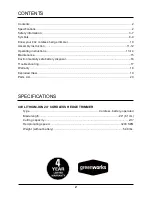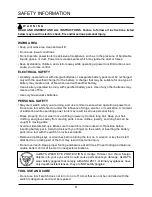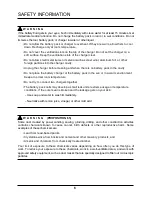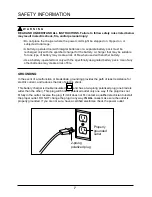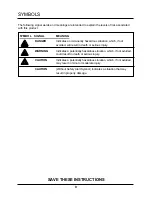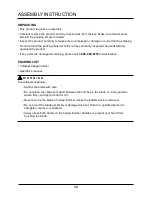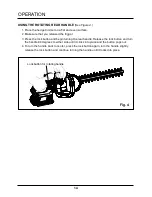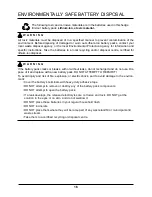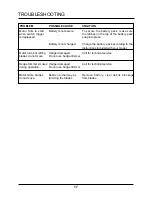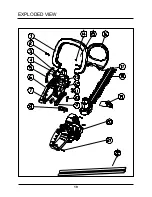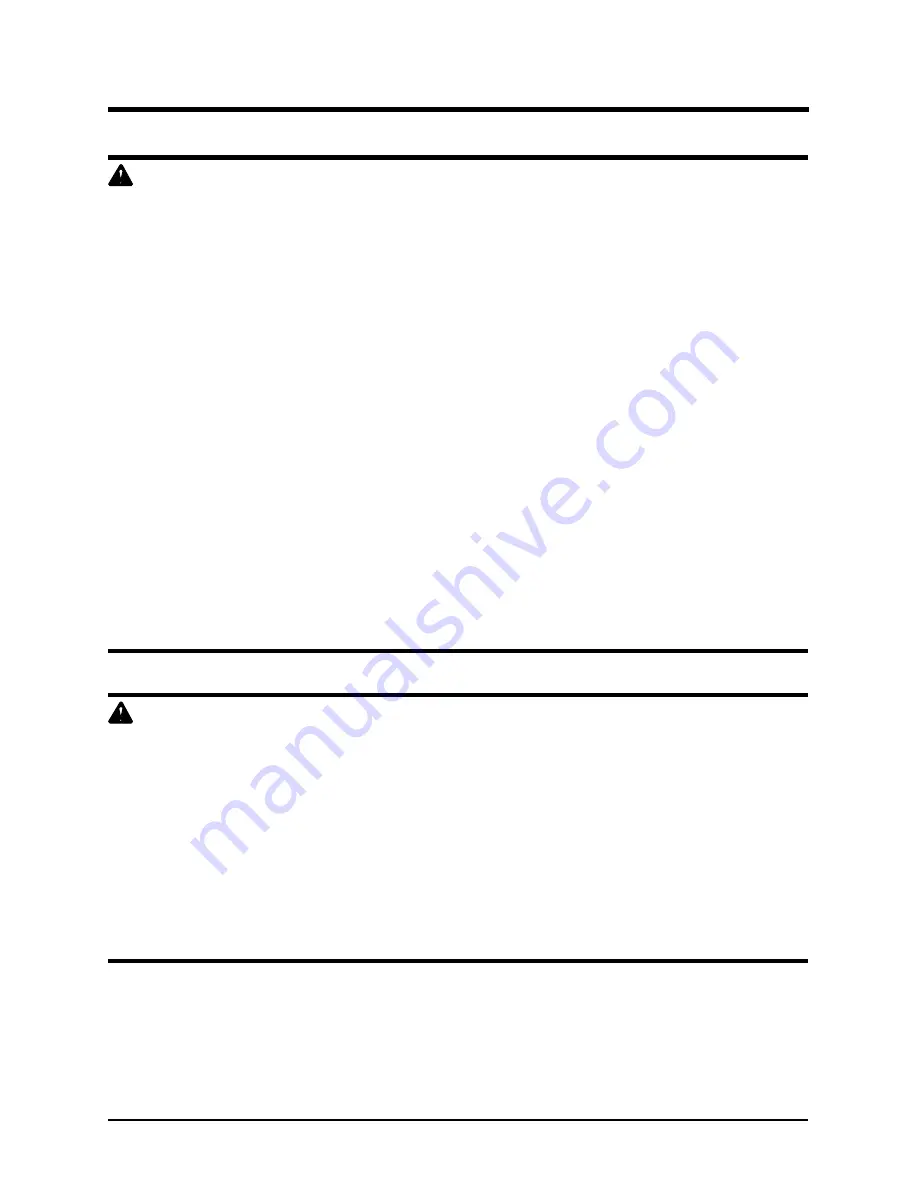
6
W A R N I N g
If the battery fluid gets in your eyes, flush immediately with clean water for at least 15 minutes. Get
immediate medical attention. Do not charge the battery pack in rain or in wet conditions. Do not
immerse the tool, battery pack, or charger in water or other liquid.
• Do not allow the battery pack or charger to overheat. If they are warm, allow them to cool
down. Recharge only at room temperature.
• Do not cover the ventilation slots on the top of the charger. Do not set the charger on a
soft surface. Keep the ventilation slots of the charger clear.
• Do not allow small metal items or material such as steel wool, aluminum foil, or other
foreign particles into the charger cavity.
• Unplug the charger before cleaning and when there is no battery pack in the cavity.
• Do not place the battery charger or the battery pack in the sun or in a warm environment.
Keep at normal room temperature.
• Do not try to connect two chargers together.
• The battery pack cells may develop a small leak under extreme usage or temperature
conditions. If the outer seal is broken and the leakage gets on your skin:
– Use soap and water to wash immediately.
– Neutralize with lemon juice, vinegar, or other mild acid.
W A R N I N g (PROPOSITION 65)
Some dust created by power sanding, sawing, grinding, drilling, and other construction activities
contains chemicals known to cause cancer, birth defects or other reproductive harm. Some
examples of these chemicals are:
• Lead from lead-based paints
• Crystalline silica from bricks and cement and other masonry products, and
• Arsenic and chromium from chemically treated lumber.
your risk of exposure to these chemicals varies depending on how often you do this type of
work. To reduce your exposure to these chemicals, work in a well-ventilated area, and work with
approved safety equipment, such as dust masks that are specially designed to filter out microscopic
particles.
SAfETy INfORMATION
Summary of Contents for 22282
Page 19: ...19 EXPLODED VIEW...


